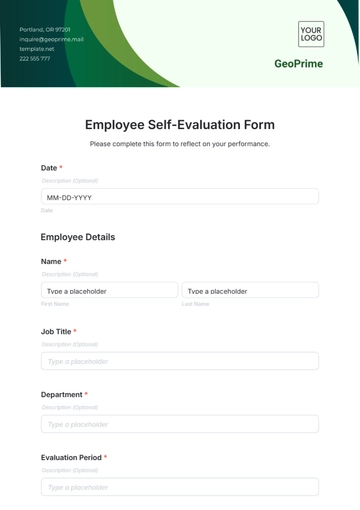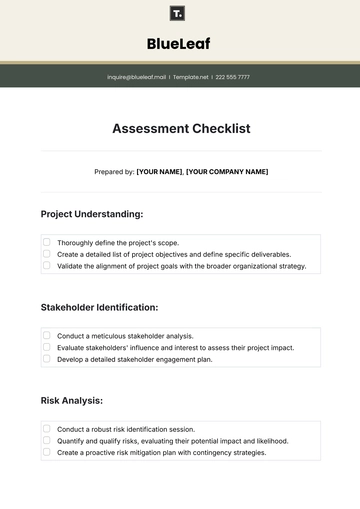Quarterly Risk Assessment Report
Prepared by: [YOUR NAME] | [YOUR EMAIL]
I. Introduction
This Quarterly Risk Assessment Report provides an overview of the risks identified in the quarter of July 1, 2050 to September 30, 2050. The report outlines the current risk landscape for [YOUR COMPANY NAME] and the measures taken to mitigate these risks, ensuring that the organization remains resilient and adaptable to changing circumstances. Key insights will guide decision-making, strategic planning, and resource allocation for the coming quarter.
II. Strategic Decision Making
Throughout the past quarter, significant operational risks were identified related to supply chain disruptions and cybersecurity threats. These issues could potentially impact the company’s ability to deliver products on time and maintain client trust. The executive team has decided to prioritize cybersecurity enhancements and renegotiate contracts with suppliers to mitigate these risks moving forward.
III. Compliance and Regulatory Reporting
As of September 30, 2050, [YOUR COMPANY NAME] has maintained full compliance with the International Data Protection Regulation (IDPR) and other relevant local laws. A risk related to non-compliance with updated data privacy regulations in emerging markets was identified, leading to the initiation of additional training programs for the staff and the implementation of a more robust compliance monitoring system.
IV. Resource Allocation and Budgeting
Given the ongoing risks associated with cybersecurity and regulatory compliance, an additional $1.2 million has been allocated to the IT department to strengthen data security protocols. Additionally, a reserve fund of $500,000 has been set aside to address potential supply chain interruptions. The reallocation ensures that the organization is prepared to respond to both short-term disruptions and long-term strategic needs.
V. Internal Communication
Communication of risk management efforts within [YOUR COMPANY NAME] has been streamlined this quarter. Monthly risk briefings were introduced for department heads, allowing for timely updates and feedback loops on identified risks. These meetings have improved cross-departmental collaboration and led to quicker decision-making processes, particularly concerning new cybersecurity measures.
VI. Risk Mitigation Progress Tracking
Risk mitigation efforts have progressed as follows:
Risk Category | Mitigation Strategy | Status | Impact on Operations | Responsible Party |
|---|
Cybersecurity Threats | Implemented multi-factor auth | 90% completed | Low | IT Department |
Supply Chain Disruptions | Renegotiated supplier contracts | 60% completed | Moderate | Procurement Team |
Regulatory Non-Compliance | Enhanced staff training | 80% completed | Low | Compliance Team |
Overall, the company is on track with its risk mitigation strategies, with full completion expected by Q1 2051.
VII. Investor and Stakeholder Communication
The quarterly risk assessment has been shared with [YOUR COMPANY NAME]'s key stakeholders and investors. The report provides transparency into the company's proactive approach to mitigating risks, particularly around cybersecurity and compliance. This has bolstered investor confidence, and no immediate concerns were raised following the distribution of the report.
VIII. Conclusion
In conclusion, [YOUR COMPANY NAME] has effectively addressed the risks encountered in Q3 2050 through targeted mitigation strategies and resource reallocation. The risk landscape remains manageable, and the company is positioned to continue its growth trajectory with minimal disruption. The next quarter will focus on further strengthening the supply chain and enhancing employee awareness of emerging cybersecurity threats.
Report Templates @ Template.net






























